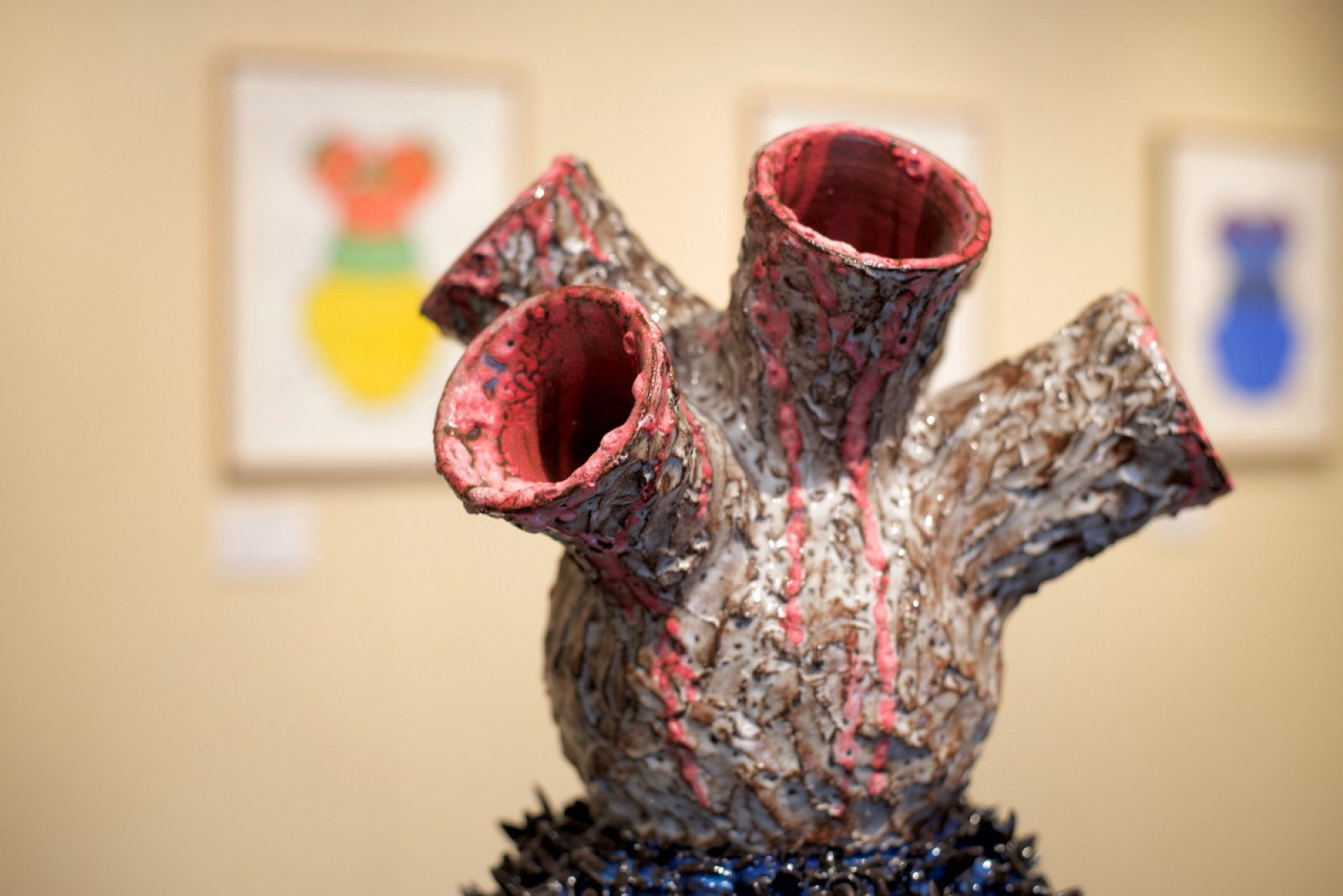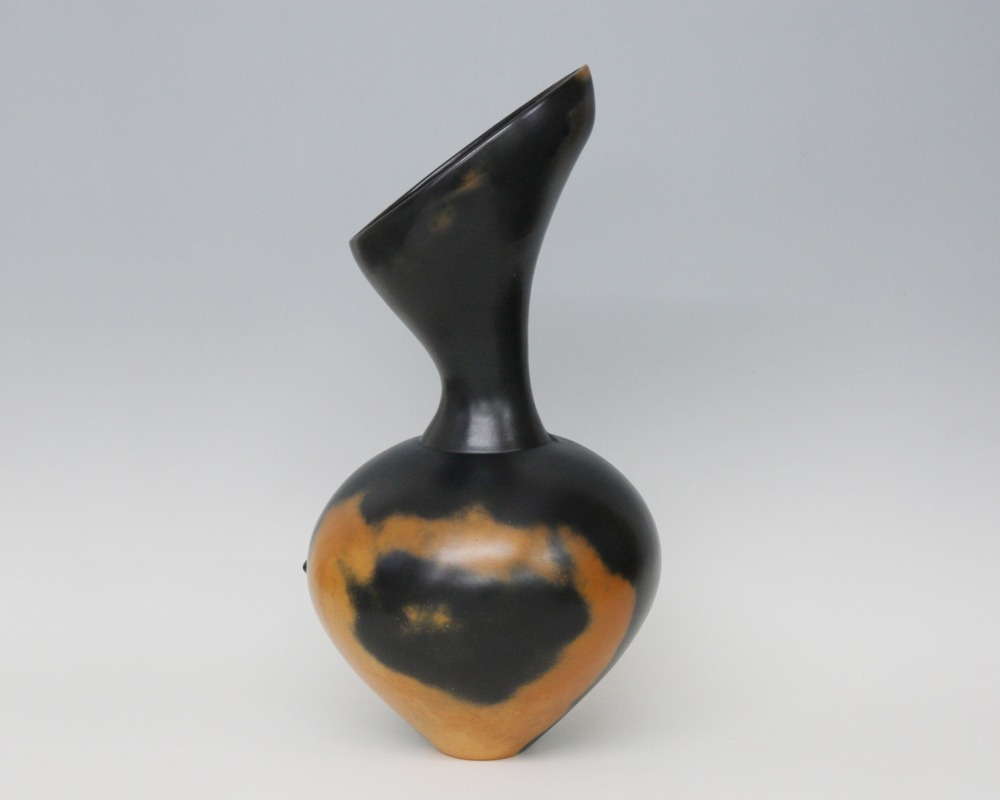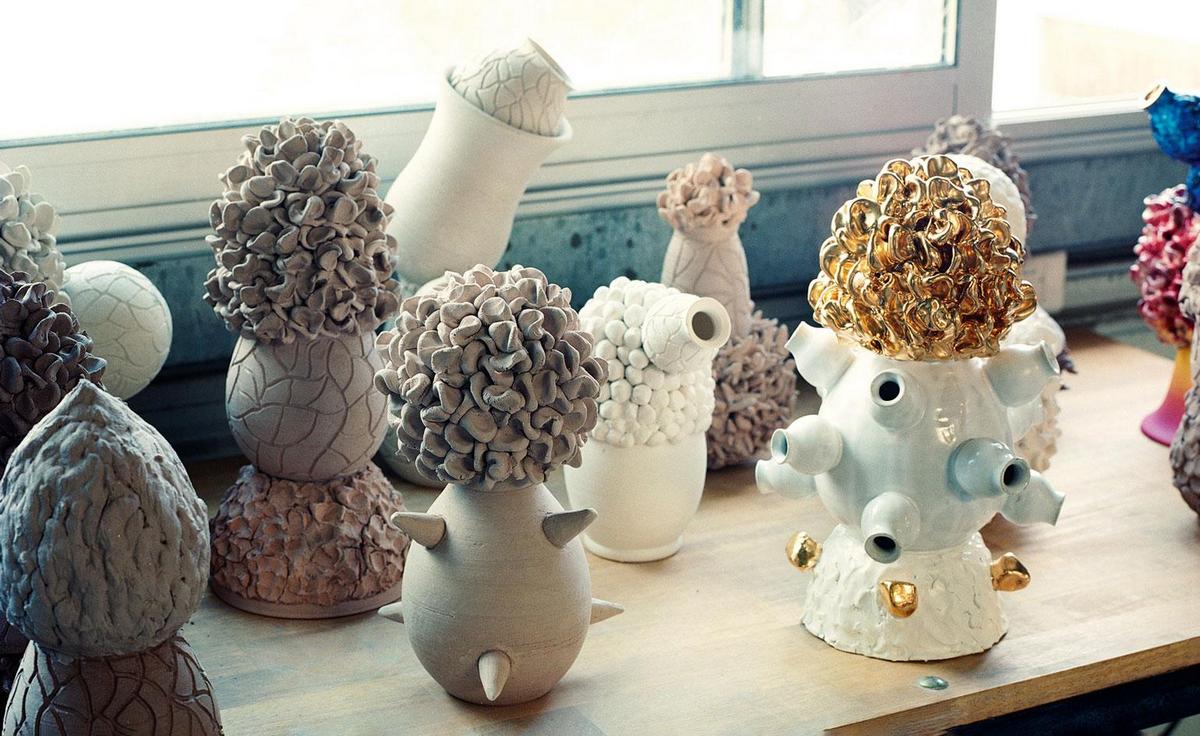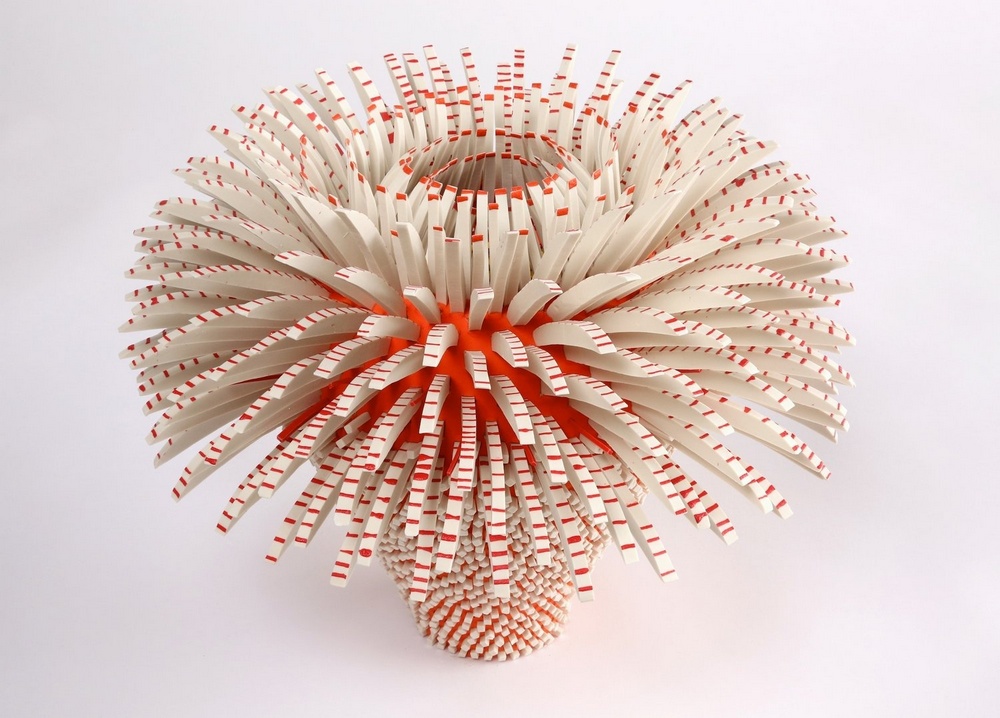

For thousands of years, the magical combination of clay, water, fire, and human imagination gave life to unique decorative and applied artworks. Traveling across continents and absorbing the national specifics of local cultures, ceramics constantly found new artistic forms. Despite its popularity, it has not been able to fully exhaust its potential, leaving ceramic masters the opportunity to tell the world something fresh, and unsaid in previous eras. At the beginning of the XXI century, ceramics continued to attract the audience's attention, communicating with them in the ancient language of plastic forms. The sources of inspiration for the masters of the new generation are philosophical ideas, ethnic motifs, landscapes of modern cities, the sophistication of technical devices, fantastic panoramas of starry worlds, and the rhythm of life constantly accelerating.
Magdalena Odundo
British Kenyan artist Magdalena Odundo received her primary education in India and Kenya. She became interested in the art of ceramics while studying graphic design at the age of 22-23. Later she studied pottery in Kenya, Nigeria, and New Mexico. All of Magdalena's pieces are hand-built using coiling and staged polishing techniques. The double firing gives the details their characteristic dark color and makes the surface perfectly smooth.

Ceramic work, Magdalena Odundo. Photos © artfund.org
Magdalena's techniques have much in common with those famous in ancient times. But the artist's work is not reduced to mechanical borrowing. The artist actively draws her inspiration from the culture of China and Mexico. In some pieces, elements of the human body (curves of the spine and arms, contours of the abdomen) are visible.
Bree Ruiz
American artist Bree Ruiz has gained popularity due to the extravagance of her works and the desire for deep symbolism in her work. She uses clay equivalent to her body weight to create pieces with complex configurations corresponding to the human body. Ceramic panels in the shape of a flower with colorful petals at the exhibitions complement the ground art objects. The ceramic sheets roll over the visitors of Bree's exhibitions, conveying a sense of dynamism and vitality on a physical level. The artist's unique technique gracefully overcomes the heaviness of the material, creating a feeling of lightness and weightlessness of heavy panels. The fantastic board "Squeezing from the West and East" gives an idea of it, presented to the audience in 2020 in New York. In addition to the traditional plastic language for the art of ceramics, the artist used attractive color solutions to enhance the visual perception of the work. The desire to demonstrate the deep connection of ceramics with the earth pushed the artist to repeat some relief elements of specific locations and soil colors on the panel. In addition to exhibitions of stationary works, the artist also holds performances: "In Imitation of a Push Forward, 180 Degree Turn, Repeat" (2014), "Premonition of a Butterfly, Indian Ink and 130 Pounds of Clay" (2016). Today, her works can be seen in Dallas, Texas, Boston, and Washington museums.
King Hondekpinkou
The renowned Franco-Beninese sculptor spent his childhood in the suburbs of Paris, where he was strongly influenced by Japanese pop culture. His love for the Land of the Rising Sun eventually led him to fine art. In 2012, King's trip to Japan discovered six cities with historical centers of authentic ceramics. In one of them, Bizen, he returned for several years to study with the local main Toshiaki Shibuta, who called himself the "father of clay." Japanese ceremonial and Shinto understanding of beauty intertwined in King's work with elements of the Beninese Voodoo cult. According to the artist, they are all united by the belief in the possibility of human communication with the higher forces that guide our lives. Subsequently, King left his old job and devoted his life to ceramics. In 2016, he founded a program called "Twin Lands," dedicated to intercultural communication between Japan and Benin through exchanging experiences in the art of ceramics. In the touch of cultures, clay functions both as an artistic material and a universal substance that unites different traditions. The personal story of the master is also intertwined with the history of intercultural dialogue between Japan and Benin. King creates his works beyond the dichotomy of art and craft, preferring pure creative impulse. He uses traditional techniques (glazing, firing), spiritual symbols, and intuition. King believes that the shape of the vessel functions as a metaphysical canvas on which all participants can have conversations, regardless of their origin, skin color, and social status.

Ceramic works, King Hondekpinkou. Photos © wallpaper.com
The master's artistic style is characterized by the desire to use simple forms to build more complex structures that sometimes seem overloaded. Vivid colors, deep textures, and metallic plating take King's work beyond the traditional notions of ceramics. The deconstruction of complex forms allows the viewer to recover the inner history of the piece and trace authentic motifs present in Japanese and Beninese cultures.
Ron Nigel
Ron's introduction to ceramics dates back to the 1950s. This was followed by studies with Peter Voulkos and joint exhibitions with Ken Price and other well-known ceramic masters on the West Coast of the United States. The source of inspiration for Ron was the works of Giorgio Morandi, Philip Guston, and George Herriman, as well as authentic Japanese ceramics and Hawaiian funeral monuments. The author's style of the master was formed for decades, absorbing innovative solutions and the results of free experiments. For example, to obtain the most vivid color combinations, Ron used both traditional glaze and paints for painting cars. According to the master, he has his own "brand" of spiritual thinking, which he is guided by when creating works. Ron avoids excessive pathos of creative activity and focuses his attention on the process of creating an art form in his spirit. His contemporary works look like miniature, carefully thought-out objects of different configurations with ambiguous meanings. You can see the contours of celestial bodies, fragments of animal limbs, tree branches, and piles of manure, sometimes all at once. The master's work is highly appreciated by contemporaries: sculptures can be seen in the Metropolitan Museum of Art in New York and the museums of art in San Francisco and Los Angeles. In 2013, his works were presented at the 55th Venice Biennale.
Zemer Peled
The young Israeli artist received her education at the Royal College of Art in London. In her work, Zemer explores the peculiarities of aesthetic perception of nature with the help of complex forms. Her works resemble unreal objects that collapse and evolve simultaneously, consisting of hundreds of porcelain fragments. Some look like flowers and inhabitants of the seabed, while others become a fantasy embodiment of emotions and desires.

«Ceramic flower» Zemer Peled. Photos © archidea.com.ua
In Zemer's portfolio, there are also dishes with original paintings. The intuitive search for new configurations allows the artist to go beyond existing natural forms and makes the works genuinely original. The precision of joining the fragments and the excellent symmetry of the objects demonstrate the love and care with which Zemer approaches their creation. The artist's works have already been presented at Sotheby's, Saatchi Gallery in London, and the Nelson Atkins Museum of Art in Kansas City. Readers of Vogue, O Magazine, and Elle had the opportunity to see photos of Zemer's works.
Janezis Belanger
American artist in the world of ceramics is known for her love of different forms that follow the body's contour. Some of Genesis's works, covered with lipstick colors, have stylistic similarities with the images of early pop art. They listen with their ears and look at the viewer with human eyes, sometimes winking their eyelashes. One look is not enough to experience a whole kaleidoscope of bright emotions and a feeling of warmth. The artist works with ceramics, metal, upholstery, and other materials. Unlike her colleagues, Jenesis prefers matte surfaces. Among her works, there are not only sculptures and household items but also immersive installations that immerse the viewer in modified lobbies, hotel halls, and apartments. The artist fills such spaces with traditional for her work images of well-groomed women's hands, the remains of desserts, and unsmoked cigarettes. Here you can also see medieval furniture, candles, telephones, flowers, pills, and other artifacts of different eras. The style and colors are chosen in such a way as to keep the viewer on the verge of pleasure and anxiety. In a sense, the installations resemble a buffet, where everyone can choose clear images to find their way to the meaning of the work. Some of Genesis' works bring the viewer to the fundamental problems of society: gender stereotypes, "stagnant" ideas about social norms, and the meaning of life. The artist's works can be seen in museums in the USA and France.
KyivGallery art critic
